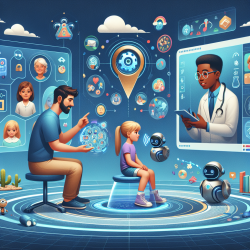Introduction
In the digital age, social media has become a cornerstone of adolescent social interaction. While these platforms offer unprecedented opportunities for connection and self-expression, they also pose significant risks to emotional well-being. Recent research, such as the study titled Neurobiological sensitivity to popular peers moderates daily links between social media use and affect, provides valuable insights into how individual differences in neurobiological sensitivity to popularity can influence the impact of social media on adolescents' daily affect.
Understanding the Research
The study conducted by Maza et al. (2023) explores the complex relationship between social media use and emotional well-being among adolescents. The researchers found that neurobiological sensitivity to popularity, particularly in brain regions like the ventromedial prefrontal cortex (vmPFC) and dorsomedial prefrontal cortex (dmPFC), plays a critical role in moderating this relationship. Adolescents who showed greater neural sensitivity to highly popular peers experienced more positive affect on days they spent more time on social media. Conversely, those who were sensitive to low popular peers reported more negative affect.
Implications for Practitioners
For practitioners working with adolescents, these findings underscore the importance of personalized interventions. Here are some data-driven strategies to enhance social media interventions:
- Assess Neurobiological Sensitivity: Utilize neuroimaging or behavioral assessments to gauge adolescents' sensitivity to social cues, particularly popularity. This can help identify those at risk of negative emotional outcomes from social media use.
- Personalized Interventions: Tailor interventions based on individual neurobiological profiles. For instance, adolescents who are highly sensitive to popular peers may benefit from strategies that enhance positive social interactions online.
- Promote Positive Content: Encourage adolescents to engage with content that fosters positive emotions and self-esteem. Highlighting the value of supportive online communities can mitigate the adverse effects of social media.
- Monitor and Reflect: Implement daily diaries or digital tools to help adolescents track their social media use and emotional responses. This self-monitoring can promote awareness and self-regulation.
Encouraging Further Research
While the study by Maza et al. provides critical insights, it also opens the door for further research. Practitioners are encouraged to collaborate with researchers to explore additional factors that may influence the relationship between social media use and emotional well-being. Areas for future research include:
- Longitudinal Studies: Investigate how neurobiological sensitivity to popularity evolves over time and its long-term impact on emotional well-being.
- Intervention Efficacy: Evaluate the effectiveness of personalized interventions in real-world settings to refine and optimize strategies.
- Broader Contexts: Examine how other social factors, such as peer relationships and family dynamics, interact with neurobiological sensitivity to influence social media outcomes.
Conclusion
The nearly ubiquitous presence of social media in adolescents’ daily lives may have important consequences for their emotional well-being. Findings suggest that individual differences in adolescents’ neural sensitivity to popularity may be a risk or protective factor in the daily association between time spent on social media and affective well-being. The current study contributes important insights that may further our understanding of how social media is impacting adolescents differently and what this could mean for their subsequent development.
To read the original research paper, please follow this link: Neurobiological sensitivity to popular peers moderates daily links between social media use and affect.










